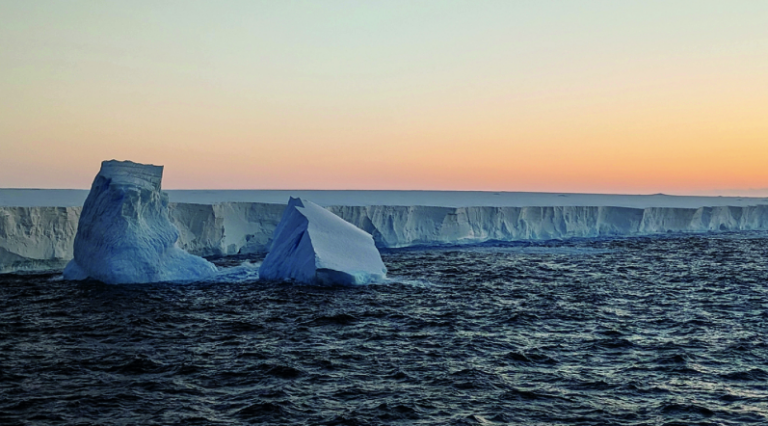Iceberg A23a, has broken free from the Antarctic seafloor, setting sail for areas known as “iceberg graveyards” and causing significant natural disasters in its path.
Originally born in 1986 when it broke away from the Filchner Ice Shelf, the iceberg has a surface area of about 4,000 square kilometers.
However, its massive body became lodged shortly thereafter when its submerged nose wedged into the bottom of the Weddell Sea.
Christopher Schumann, a glaciologist at the University of Maryland and NASA’s Goddard Space Flight Center, explained that A23a has held the title of the world’s largest iceberg multiple times, as other larger ice sheets formed and disappeared while it remained in place.
By late November, major news outlets reported that A23a had finally begun to move.
Its journey to what is colloquially known as “the iceberg graveyard” began in 2020 when it began to break free from its subterranean substrate at the bottom of the sea.
As it heads toward warmer waters that are not conducive to ice, scientists and climate experts are closely monitoring its movements and pondering the implications for climate change.
Iceberg A23a, measuring 4,320 square kilometers, is now traveling toward the Southern Ocean, marking a significant event in the ever-changing dynamics of the Antarctic landscape.
Satellites are tracking its progress through the icy waters, drawing attention not only because of its size but also because of its potential impact on global sea levels and climate patterns.
While the floating of large icebergs is not unprecedented, the extent of the A23a detachment serves as a reminder of the complex interactions between ice sheets, ocean currents, and climate change.
These icebergs, with their lower density compared to seawater, can affect marine ecosystems, disrupt shipping lanes, and contribute to sea level rise as they melt.
A23a, in particular, has the potential to influence ocean circulation patterns and global climate systems, potentially colliding with a large penguin sanctuary before breaking up and melting.
Hayate: New deadline for the youtuber to apologise
The release of large icebergs like A23a raises questions about the broader context of climate change. While iceberg detachment is a natural process, the increased frequency and size of these events have become a concern among scientists.
The warming of the Antarctic Peninsula and other regions has accelerated ice melting, contributing to global sea level rise.
Climate change, driven by human activities such as fossil fuel burning and deforestation, plays a central role in this scenario, leading to thinner and more vulnerable ice shelves.
Consequently, the larger and more frequent icebergs that detach not only contribute directly to sea level rise but also disrupt ocean currents, affecting global climate patterns.
Ask me anything
Explore related questions





